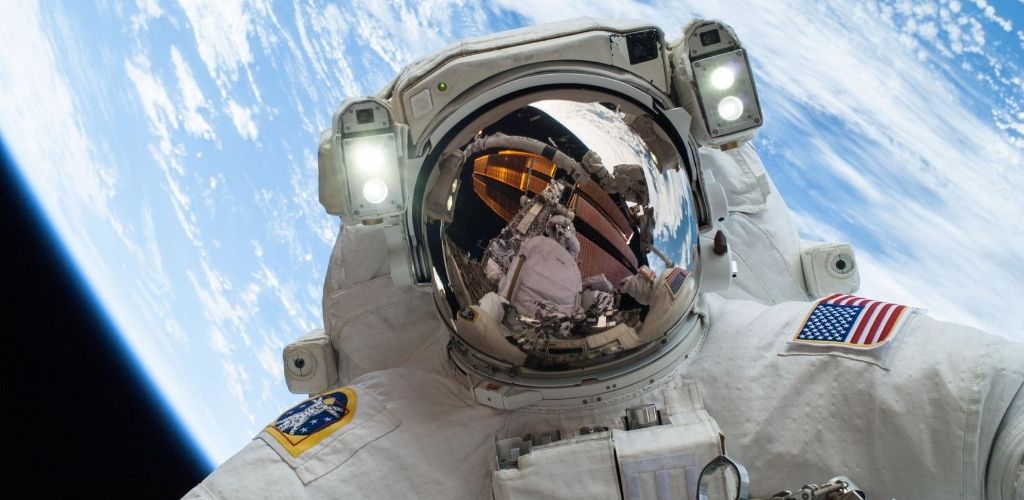
At the end of the NASA Astronaut Selection Process, you have been recruited as an Astronaut Candidate? Congratulations!
You will soon be walking in the footsteps of your heroes Neil Armstrong, Buzz Aldrin, John Glenn, Scott Kelly, Peggy Whitson and so many other NASA astronauts… But before you officially become an astronaut and become eligible to be assigned to a space mission, you have to follow the astronaut training program for 2 years. And if you are lucky enough to be selected for a space mission, you must undergo specialized training for 3 months.
However, nothing is won yet! NASA can disqualify you from astronaut training at any time if you are not performing well enough, or for medical reasons, or for any other reason. Because of this uncertainty, Astronaut Candidates must have foolproof nerves and unwavering faith in their destiny to stay focused throughout their training.
Let’s learn about NASA’s astronaut training facilities and program together!
The Lyndon B. Johnson Space Center, home of the astronauts
Two months after the official announcement of their selection, the Astronaut Candidates return to the Lyndon B. Johnson Space Center, the headquarters of the NASA Astronaut Corps where they had interviewed and carried out exercises, for begin the NASA Astronaut Basic Training.
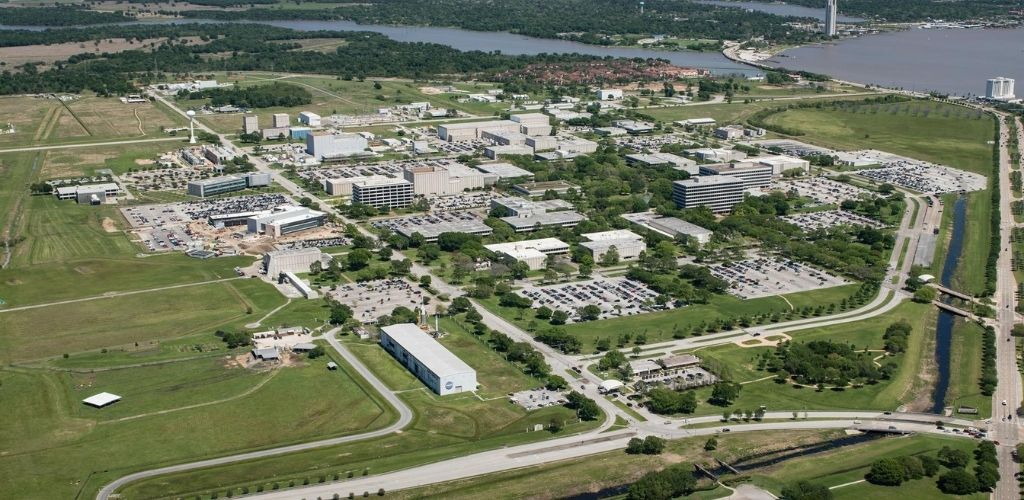
Creating a training program to prepare astronauts to work in zero gravity is a real challenge. Trainers should train Astronaut Candidates in the operation of complex space vehicles and the operation of space suits by attempting to simulate a weightless work environment. For this, the trainers have state-of-the-art equipment.
The simulators located at the Johnson Space Center
To train Astronaut Candidates, NASA provides simulators whose objective is to reproduce as closely as possible the environment of a space mission. Astronauts prepare about 300 hours in these simulators before their first space mission.
Space Vehicle Mock-up Facility (SVMF)
The SVMF provides trainers with scale reproductions of modules from the ISS, Orion spacecraft, SpaceX Crew Dragon and Boeing CST-100 Starliner space capsules, as well as other space equipment. The objective is to familiarize ASCANs with these spacecrafts and to perform tasks there.
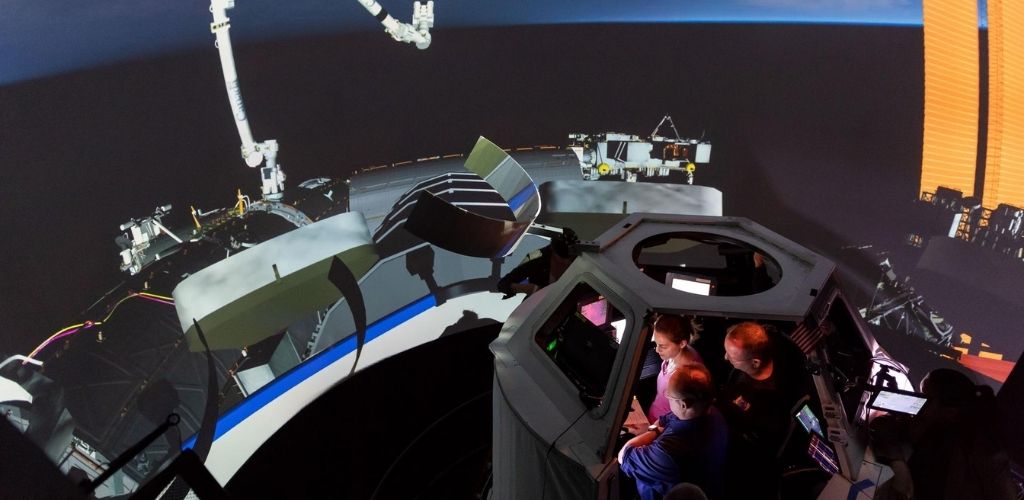
They learn maintenance, airlock operations and emergency procedures specific to each spacecraft. During the simulations, the Astronaut Candidates communicate in real time with the ground crew, as in a real space mission.
Virtual Reality Simulator Facility (VRSF)
Preparation for extravehicular activities (spacewalks) and training in handling robotic arms takes place in the Virtual Reality Simulator Facility, where astronauts are immersed in a simulated micro-gravity environment.
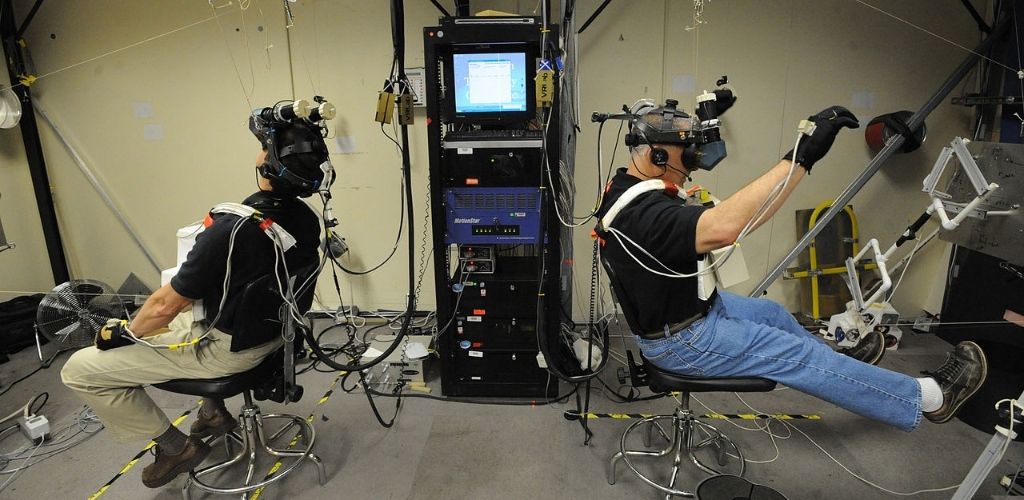
Neutral Buoyancy Laboratory (NBL)
The world’s largest indoor swimming pool, the Neutral Buoyancy Laboratory, is located within the Sonny Carter Training Facility. This giant pool is 200 feet long (61 meters) and 40 feet deep (over 12 meters). At the bottom of the swimming pool which simulates the weightlessness of the space environment, the astronauts practice extravehicular activities on life-size reproductions of modules that make up the International Space Station. Each hour of a spacewalk requires around 10 hours of training in the pool!
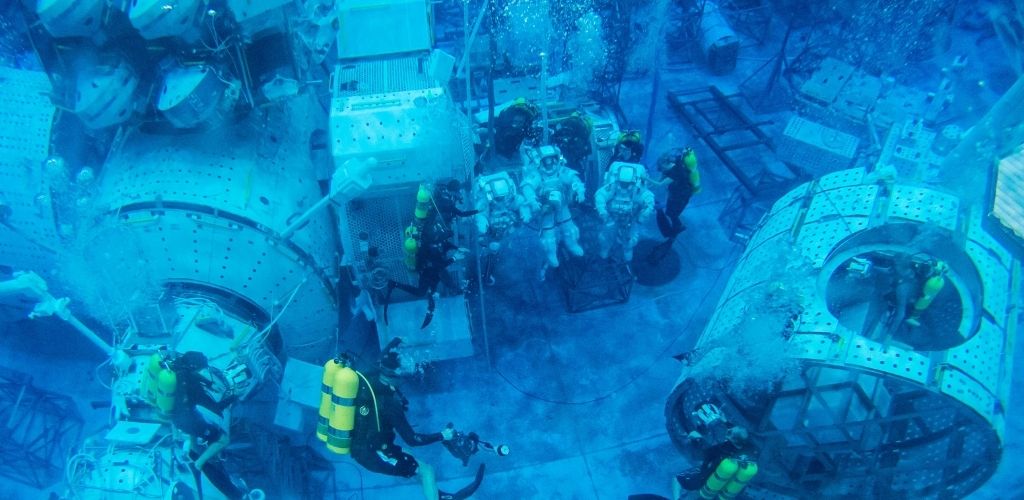
Astronaut Douglas Hurley testifies to the difficulty of training in the Neutral Buoyancy Laboratory:
My first six-hour run in the EMU, the space suit, was probably physically, the most challenging thing I’ve done here. It’s a pressurized suit. You’re working with gloves that don’t exactly fit you very well. You’re doing a lot of work with your hands, almost entirely for six hours, you’re working with your hands and arms, so that was extremely physically challenging I think, from start to finish. By the time you’re done with a six-hour Neutral Buoyancy Laboratory run, you’re pretty well exhausted.
Here is an immersive VR/360 ° video of astronauts training in the Neutral Buoyancy Laboratory:
Precision Air-Bearing Floor (PABF)
In space, the absence of friction can make it difficult to move and stop objects. The risk is to get injured, injure other astronauts or damage equipment. The aim of the PABF is to prepare Astronaut Candidates for this. A compressed air system greatly reduces the friction of air on objects. With this facility, ASCANs can practice moving objects of different sizes.
NASA astronaut training program
Duration: 2 years
Astronaut Candidate Basic Training
During Basic Training, ASCANs familiarize themselves with the operation of spacecrafts, train in spacewalks, learn to speak Russian, develop their team spirit and other skills necessary to practice as a NASA astronaut.
Refresher courses in certain fields are given to ASCANs. The objective is that all Astronaut Candidates have reached a minimum level in these fields at the end of the Basic Training, in order to be able to be fully operational during a space mission and to be able to collaborate effectively.
NASA Astronaut Candidates take 16 different technical courses in the fields below:
- Life support systems
- Orbital mechanics
- Payload deployment
- Earth observations
- Space physiology and medicine
Training and survival tests in life-treatening environments the 1st month
During the first month of training, ASCANs must pass military water survival tests, and become certified SCUBA (scuba diving) to prepare for extravehicular activities training.
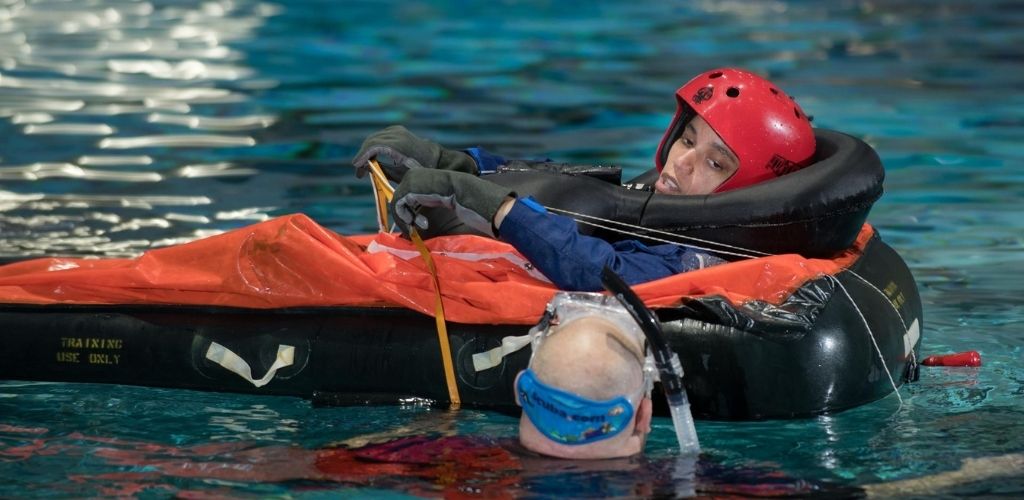
They also have to pass swimming tests. The first test involves swimming three lengths of a 25-meter pool without stopping. The second test also involves swimming three lengths of a 25-meter pool, but this time with no time limit and… wearing a flight suit and sneakers! They must also be able to float on the water for 10 minutes wearing a flight suit.
А ты говоришь по русски
Throughout their training, Astronaut Candidates learn to speak, read and write in Russian, in order to be able to collaborate with their Russian counterparts on space missions and to be able to operate Russian spacecrafts. This is mandatory, because for example the manual on board the Soyuz space capsule (which is the back-up space capsule of SpaceX Crew Dragon and Boeing CST-100 Starliner) is not translated into English! The International Space Station is also partially made up of Russian modules.
Astronaut Candidates who do not achieve a sufficient level of Russian during Basic Training may be disqualified by NASA. Russian being a complex language to learn and practice, it is best to start learning Russian right away if you are serious about becoming an astronaut!
In addition, ASCANs are trained in the cultural specificities of other countries involved in the international space effort, also to promote a smooth understanding between astronauts from different countries.
Astronaut Candidate Advanced Training
During this period, astronauts make numerous and long trips across the United States and to NASA’s partners countries to continue their education and training.
Training in the operation of spacecrafts
During advanced training, astronauts learn how to operate a spacecraft among the International Space Station (ISS), the SpaceX Crew Dragon space capsule, the Boeing CST-100 Starliner space capsule and the Orion spacecraft tasked with bringing astronauts to the orbit of the Moon. ASCANs familiarize themselves with spacecraft on scale reproductions. They also learn to carry out scientific experiments that they will have to reproduce during their space mission.
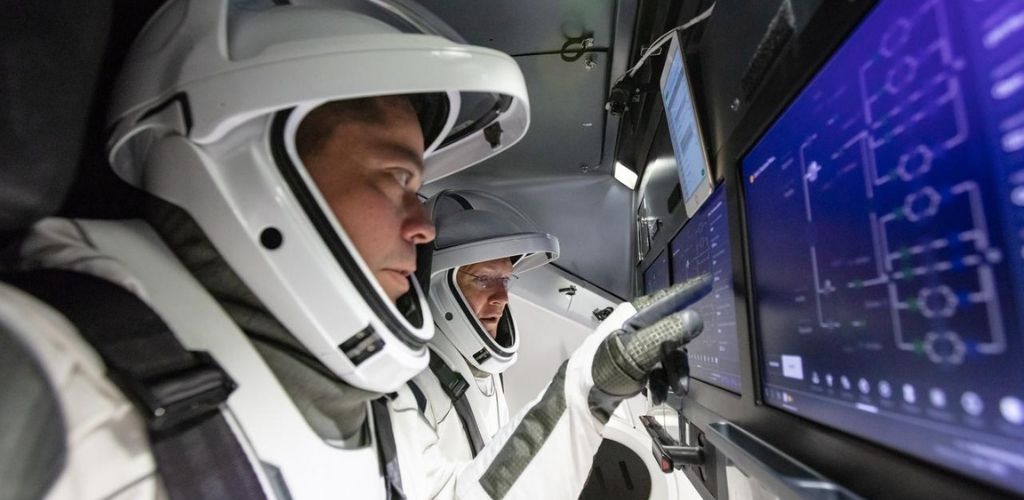
Weightlessness experience
ASCANs discover or rediscover weightlessness thanks to an aircraft specially modified to perform parabolic flights. For about 20 seconds, Astronaut Candidates experience weightlessness. This is repeated 40 times, which is just under 15 minutes of weightlessness per flight session.
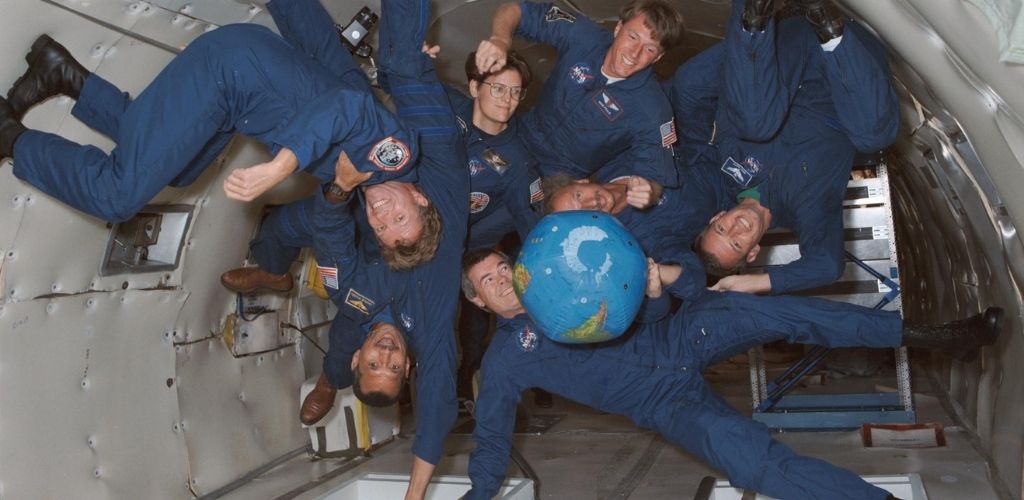
Team-building activities
The main objective of some activities is to develop the team spirit of Astronaut Candidates, such as the CAVES experiment created in 2011 by ESA (European Space Agency). Originally, this program was a cooperative activity to build team spirit. The goal is to put Astronaut Candidates in stressful situations and see how they evolve, to reveal skills and personality traits.
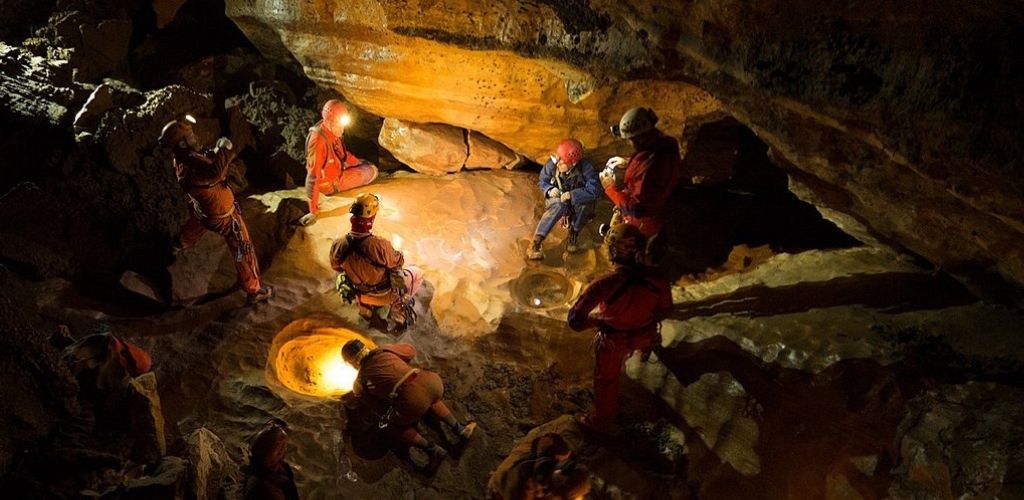
It is a caving experience taken to the extreme. It begins with abseiling and rock climbing training. Then, for a day, the Astronaut Candidates enter very narrow and winding caves, where it is easy to get lost and where the sense of direction is put to the test. This is not suitable for claustrophobes!
On another day, participants have to photograph the course and perform laser measurements in order to map the cave with precise measurements of volumes and slopes.
Then for a week, the participants spend a whole week underground. They join a base camp located 1.5 kilometers from the entrance to the cave. Their mission is to accurately map the entire cave, which stretches tens of kilometers in length. Participants must decide which holes to slip into, where to go, and see if the paths end in dead ends or if they can rush into them to continue exploring.
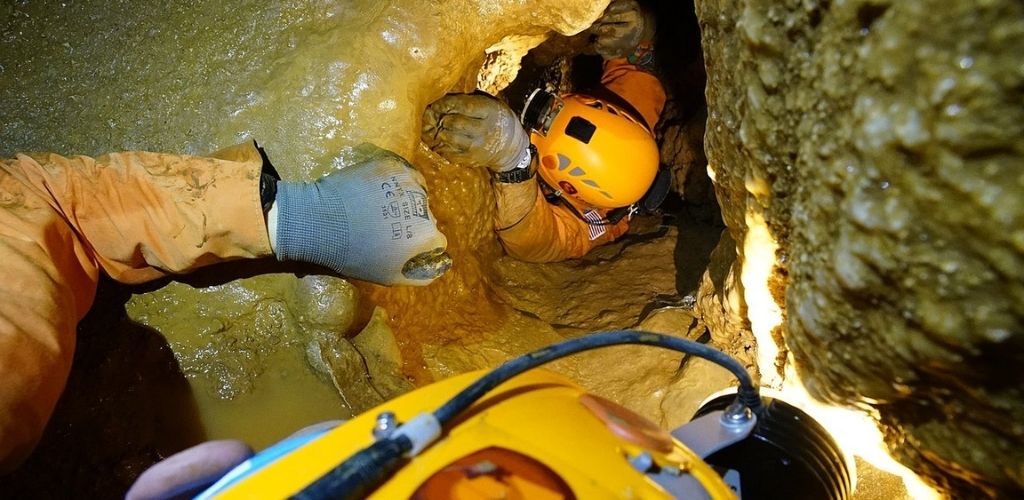
There is no light in the cave: ASCANs light up using the torch light on their helmets. It is an activity that resembles what astronauts experience in space, in that astronauts lose track of time because of the sun rising and then setting every hour and a half.
In the cave, there are also no paths or guardrails. So always be sure to be strapped in at all times when exploring the cave, as a fatal fall can happen at any time. Here too, it’s a question of life or death in space during extravehicular activities.
And the experience continues after leaving the cave, after a week of isolation in a life-treatening environment. American astronaut Randy Bresnik testified before his first space mission:
I was in the cave with Thomas Pesquet and Tim Peake. And when we came out, Thomas was like “The sky is a different blue. They changed the blue!” It was just so vibrant. And the other thing that was so amazing was that, you know, the sights and sounds and smells in the cave are all very very much the same. And we came out after that week, and literally, you could smell every bush, and the dirt, and the grass. I mean, it was just shocking, just so sensory overload with your smell, and so very much like, you know, you hear people coming back from space station, where you don’t have the fresh smells, or the breeze from the wind that modulates. You have the constant breeze of the air ducts and the ventilation system. And certainly the smells are pretty standard up there. And you come back and you just you know, feeling the grass under your toes, and this and that. I mean, we’re supposed to be landing in December. I’m sure snow will have a smell when I come back, like, “That’s fresh snow! That’s awesome!”
Discover the CAVES experience in video:
The final selection of NASA astronauts
Upon completion of the initial training period (Basic Training + Advanced Training), ASCANs who successfully pass the assessments officially become NASA astronauts and therefore federal employees. They thus become eligible to be assigned to a space mission. To become an astronaut, you must have completed the following modules:
- International Space Station systems training
- Extravehicular Activity skills training
- Robotics skills training
- Russian Language training
- Aircraft flight readiness training
An official ceremony is organized by NASA to introduce the new class of astronauts to the media.
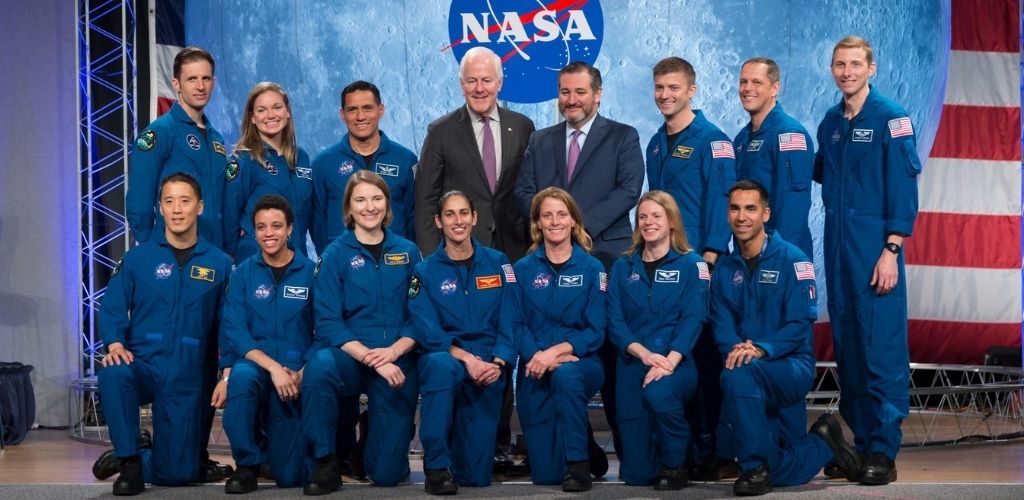
The path of Astronaut Candidates who are not selected ends during the training period or at the end of it. They will not become NASA astronauts this time around, but will be able to try their luck again in the next NASA astronaut recruitment campaign. NASA often offers federal employee positions to unselected ASCANs, depending on NASA’s needs.
Intensive training of NASA astronauts for a specific mission (Intensive Training)
Duration: 3 months
The assignment of astronauts to a space mission, followed by formalization, is a major media event. The astronauts take the stage alongside the representatives of NASA, their biography is dissected by the media and the general public… They become real national heroes. But before they fly to space, there is still a lot of work ahead for NASA astronauts!
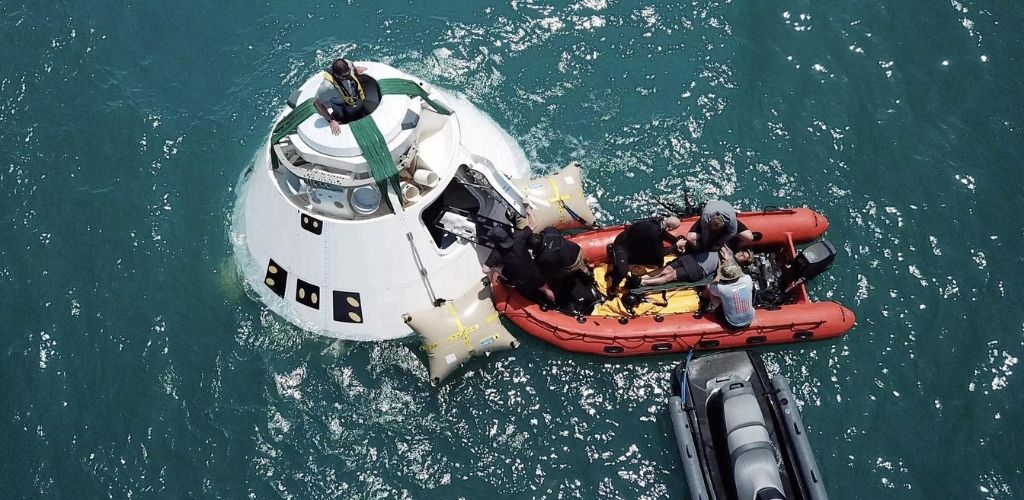
During the intensive training phase, NASA astronauts assigned to a space mission undergo mission-specific operational training, and become familiar with their assigned experiments. They are also trained in first aid procedures in case of medical problems during the mission.
Mission specific simulations are designed to repeat flight and mission procedures. The final astronaut crew/mission control crew training is carried out in parallel with the mission planning.
Astronauts are assigned to their first space mission an average of 6 years after they officially became astronauts.
How to become a NASA astronaut?
- NASA astronaut requirements
- NASA astronaut selection process
- NASA astronaut training
- Advice and strategies to become astronaut
Image credits:
- Johnson Space Center facilities: NASA/B. Stafford
- SpaceX Crew Dragon simulation: NASA/David DeHoyos
- Virtual Reality Simulator: U.S. Navy photo by Mass Communication Specialist 2nd Class Dominique M. Lasco / Public domain
- Neutral Buoyancy Laboratory: NASA/B. Stafford
- Water survival training: David DeHoyos/NASA-JSC
- Bob Behnken and Doug Hurley – SpaceX Training: SpaceX
- Parabolic flights: NASA
- CAVES program: ESA
- Astronaut gratuation ceremony: NASA/JAMES BLAIR
- Boeing CST-100 Starliner Astronaut Water Rescue Training: NASA/Isaac Hutson